Mars Desert Research Station
Mission Plan
Crew 305 – Valles
Dec 8 th , 2024 – Dec 21 st , 2024
Crew Members:
Commander and GreenHab Officer: Hunter Vannier
Executive Officer and Crew Geologist: Ian Pamerleau
Crew Engineer: Spruha Vashi
Health and Safety Officer: Peter Zoss
Crew Journalist: Rashi Jain
Crew Scientist: Monish Lokhande
Mission Plan:
The twin “Valles” (305) and “Montes” (306) missions are the eighth and ninth all-Purdue crew at MDRS,
and this is our second year being granted two back-to-back rotations. We aim to bring the same
enthusiasm, interest, and quality of research as past Purdue crews, and hold ourselves to a high
standard.
Crew 305 will perform various research tasks that include measurement of ephemeral streams and Mars
analog paleosols. Some geologic excursions will be supported by a rover to test how it can best support
astronauts in a Mars environment. Indoors, environmental sensors will monitor different buildings, and
MDRS infrastructure will be studied to identify the requirements for safe habitat operations. Data from
health tracking and cognitive tests via headsets will be combined to assess mental health and cognitive
performance. Some of the experiments will be performed inside the MDRS modules, while others
require Extra Vehicular Activities (EVA), thus adding realistic difficulties to the task. As usual, the
combination of excursions and life inside the habitat will provide crew members with the opportunity to
both working on their research and identifying potential difficulties of working with space suits and
living in close quarters in a small habitat.
The main objectives of the Valles analog Mars mission are:
Keeping the highest level of fidelity and realism in the simulation. Earth analogs cannot
reproduce Martian gravity and atmosphere, but the crew will take every other aspect into
consideration. This includes safety and research protocols, definition of roles and daily schedule,
EVA protocols (and limitations), communication protocols, fruitful collaboration with the
program director and mission support, and adaptation to limited resources and environmental
difficulties.
Performing research in the fields of geology, engineering, human factors, and crew operations
on Mars.
Experimenting with personnel at Purdue, providing a simulated mission control center to
coordinate and support research and operations (including delay in communication, to simulate
Earth-Mars distance).
Continuing the fruitful collaboration of Purdue crews with the MDRS program.
Following the mission, supporting MDRS with useful results for future crews.
Crew Projects:
1.
Title: Effect of Moisture on Microgreen Growth
Author(s): Hunter Vannier
Objectives: The primary question I seek to answer is: How does soil moisture content affect the
growth rate of microgreens?
Secondary: Determine the composition of a paleosol sequence near MDRS.
Description: I will grow broccoli microgreens, and vary water volume between three sets of
plants, and I will use a second set of different sized trays to see if growth is affected. There will
be a soil moisture sensor in each tray connected to a single Arduino Uno microcontroller. This
will enable direct recording of soil moisture content. Plant height will be measured to
determine correlation with soil moisture.
Secondary: A second research objective will be collecting a stratigraphic sequence of paleosols.
Every 10 cm, a new paleosol will be collected to determine change in composition.
Rationale: Growing food on Mars will be necessary for long-duration missions or habitation,
and developing efficient growing practices is a critical aspect of resource conservation,
especially for water. I aim to also improve water usage efficiency at MDRS by creating
recommended water quantities for microgreens.
Secondary: Paleosols have recently been recognized as an important geologic unit in Jezero
Crater, the target of the Mars 2020 Perserverance Rover. However, the composition, water
content, and biosignature preservation potential has not been well studied in a Mars analog
environment with application to Mars research. In doing so, we can better assess the role of
paleosols in the Mars geologic record and their potential to preserve past life.
EVAs: 2-3 EVAs
2.
Title: Investigating Rover Applications in a Mars Analog Environment
Author(s): Spruha Vashi
Objectives: The primary question I seek to answer is: How can a rover assist humans during
EVA processes and what interactions are necessary for the rover-human relationship?
Description: The objective of this work is to build a modular rover that is capable of traversing
the analog Mars terrain along with crew members on EVA. Testing at MDRS includes mobility
testing over different sections of terrain, confirming communications and operability, and
exploring human-machine teaming capabilities. The rover will be designed to have a modular
‘toolbox’ and be able to travel with crew members on EVAs and help hold tools. Data collected
will help detail the rover’s operational capabilities in both performance metrics as well as
opportunities of use.
Rationale: Rovers are a longstanding technology that has been applied on Mars but never have
Martian rovers directly interacted with humans. When humans do reach Mars, it is inevitable
that they will work directly with rovers on the surface to help complete tasks. It is necessary to
understand the capabilities of human-machine teaming and how rovers directly designed to
work with humans will operate in the Mars environment.
EVAs: 2-3 EVAs
3.
Title: MDRS Monitoring System
Author(s): Monish Lokhande
Objectives: The primary question I seek to answer is: How can we achieve data efficient
communication to ground station?
Secondary: Can we transmit the data to a remote station?
Description: I will be making a network of Raspberry Pis to measure data from various locations
in the habitat to measure the necessary sensor data (CO2, VOC, Air Quality, Temperature and
Humidity). This data would be collected and analyzed for any possible sudden changes. The
“Sensor Packs” would be made to operate independently on batteries. Test for parsing data to
extract only the necessary data.
Secondary: The data collected will be transmitted to a generated website to publish and check
would be made that data is published regularly.
Rationale: Equipment and system health monitoring is an important aspect for long duration
missions on Mars. Loss of any equipment or failure of the system on Mars is a massive danger
for crews, as transporting any material takes at least eight months of lead time. Also,
communication with the Martian habitat has up to a 21-minute delay. Hence, any emergencies
need to be detected and solved locally. Therefore, in-house technology to monitor and
potentially identify any possible hazardous situations is vital.
Secondary: Having local monitoring is vital but also transmission to Earth is necessary for
Ground station to have the status of systems that might be functioning incorrectly. Due to the
communication limitations, sending only necessary data might be more economical resource-
wise.
EVAs: No requirement.
4.
Title: Hydraulic Geometry of Ephemeral Streams to Elucidate Paleoclimate
Author(s): Ian Pamerleau
Objectives: The primary question I seek to answer is: What is the hydraulic geometry of
ephemeral streams near the MDRS campus?
Secondary: Conduct more detailed geologic mapping of the region between the Tununk Shale
and Summerville and Curtis Formation on the MDRS campus.
Description: Ephemeral streams are present around the MDRS campus and carve out the
landscape after heavy rain. The hydraulic geometry of these streams mathematically describes
how the width and drainage area change along the channel. I will measure the channel width of
ephemeral streams on the MDRS campus (specifically within Candor Chasma and the
southwestern regions of Eos Chasma) to find the hydraulic geometric relations of the streams. I
will mark down the coordinates of each location and use it to find the corresponding drainage
area of each measurement with a digital elevation model.
Secondary: The USGS geologic map of the surrounding MDRS area looks at the large-scale
region of the MDRS campus. However, there is some preferential erosion that leads to mounds
of some units being present in the regions labeled with other units. With remaining time, I will
note where these overriding units are for future MDRS missions.
Rationale: There is a range of values that the hydraulic geometry of rivers tends to fall within,
which tells us more about climate, lithology, and sediment load. These values have been
established for the more “mature” rivers with constantly flowing water. However, the
ephemeral steams at MDRS may not have achieved the values present in the literature. Testing
this will give insight into whether or not Martian astronauts will be able to measure similar
streams on Mars to elucidate paleoclimate.
Secondary: More detailed geologic maps of the MDRS campus will help future MDRS teams
conduct their field work and prepare for research.
EVAs: 6–7 EVAs
5.
Title: Lessons for Robotics from a Mars Analog Astronaut Mission
Author(s): Rashi Jain
Objectives: The main objective of my research is to use MDRS as a case study for identifying
design requirements for safe habitat operations.
Description: My research will focus on identifying the requirements for safe habitat operations.
The study will evaluate how available resources at the Mars Desert Research Station (MDRS)
are utilized during the mission to meet these requirements, including rover operations during
EVAs. Data collected will be used to (i) document key functions essential for ensuring safe
habitat operations and mission success and (ii) assess the effectiveness of onboard resources in
fulfilling these functions.
Using this, I will derive the functional needs of future robotic systems.
Research Tasks:
1. Study Habitat Design and Available Resources and Document It.
2. (Optional) Conduct Functional Hazard Analysis or theoretically create scenarios that
demand new or different functionalities.
3. Assign Resilience Power Metric to different Habitat Elements, available equipment, and
resources on Board.
4. Identify Requirements for Safe Habitat Operations
5. Identify Requirements for Mission Success.
6. Functionally breakdown the identified requirements.
7. Evaluate (map the requirements with functionality) whether and how habitat design,
available equipment and resources can satisfy identified requirements.
8. Validate the resilience power metric.
Rationale: While Mars will have crewed missions, there will also be periods of dormancy. In
these periods of dormancy, the habitat will heavily rely on robotic systems for safe operations.
Thus, it is important to identify critical habitat operations, and design robotics for them.
EVAs: 3-4 EVAs
6.
Title: Wearable-Based Autonomic Profiles for Real-Time Cognitive Monitoring in Spaceflight
Author: Peter Zoss
Objective: This study will longitudinally quantify individual changes in autonomic nervous
system (ANS) status via a wearable sensor in MDRS crew members to understand how our
autonomic activity is associated with sequential measures of cognitive performance for
predictive model development.
Description: Mental health and cognitive performance are important aspects of long-term
space missions given the isolated environments, delayed communications (i.e., between 3 and
21 minutes), and lack of proper healthcare access. Cognitive performance is important to
maintain since a decline could compromise the safety of the mission, leading to failure and the
potential loss of life. Monitoring the physiologic changes associated with stress and their impact
on cognitive performance will help maintain crew safety. Watches will be worn before, during,
and after simulation to record health data of crew members. Activity logs will be used to
monitor personal responses crew members have to different environmental factors, providing a
personal contextualization to the data. Crew members will then complete the Cognition battery
test, a cognitive performance test designed for astronauts, on an electronic device while
wearing and looking through the Varjo XR-3 headset to track gaze data.
Rationale: Developing a real-time tool for predicting cognitive performance based on
continuous digital health data obtained from wearables will lead to more efficient and timely
interventions during space missions.
EVAs: None required
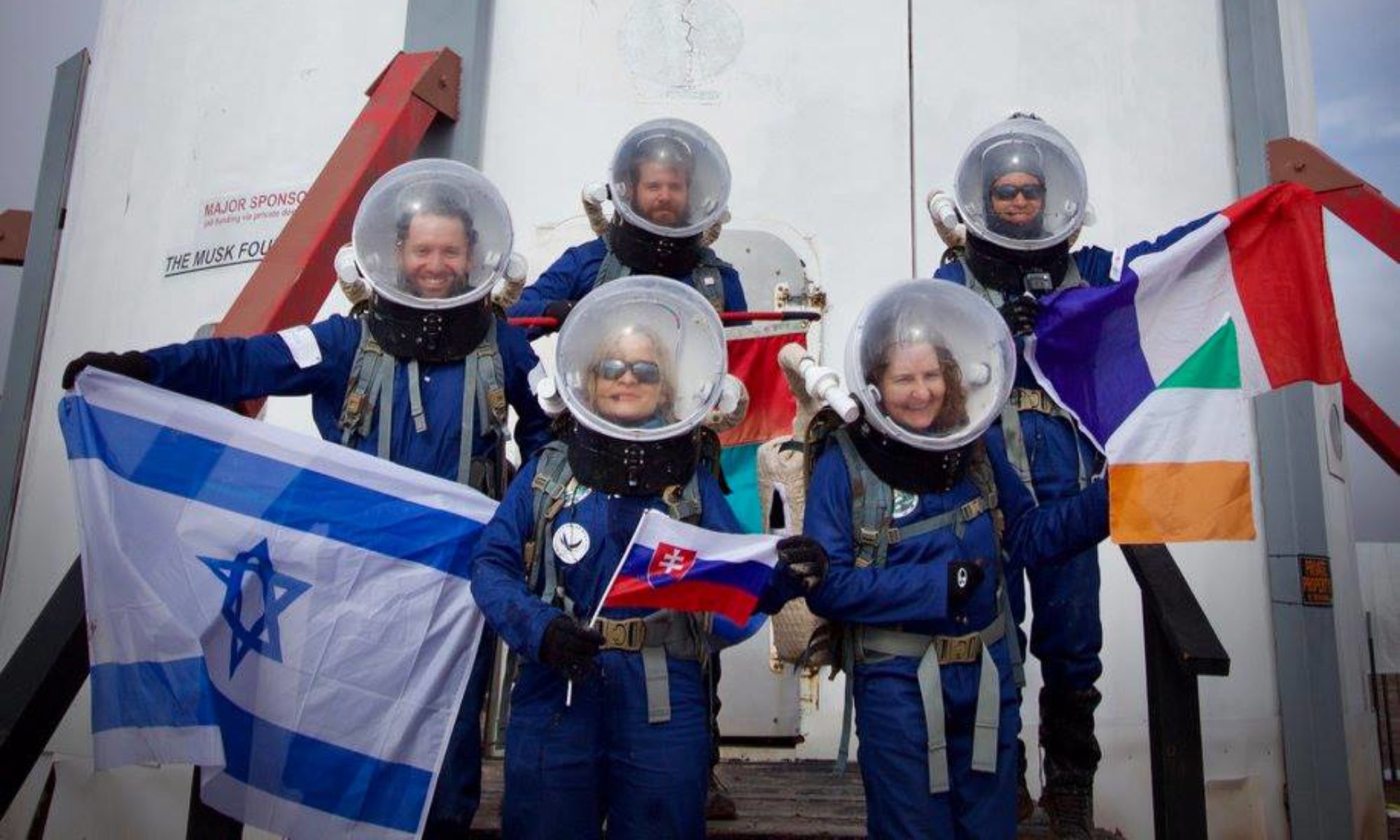


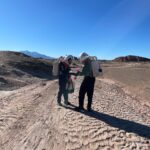
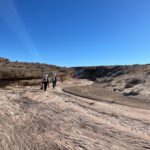
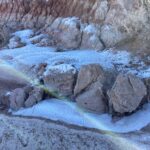
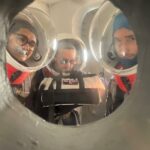
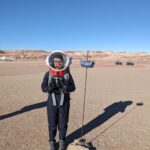

You must be logged in to post a comment.